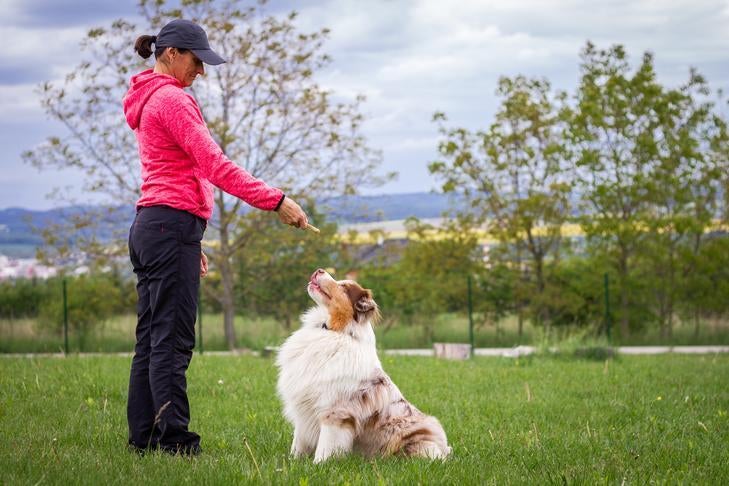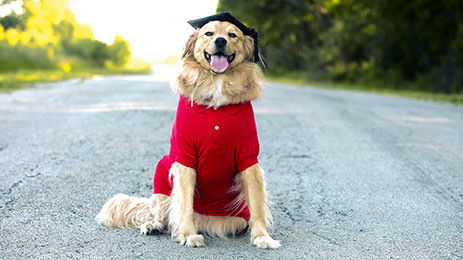Usual Behavioral Issues and Their Solutions in Dog Training
Usual Behavioral Issues and Their Solutions in Dog Training
Blog Article
Necessary Tips for Effective Dog Training: An Overview for Pet Dog Owners
Effective canine training is a complex process that needs a tactical strategy customized to both the pet dog's character and the proprietor's goals. Recognizing just how to navigate these challenges can significantly improve the training experience, inevitably changing the relationship between proprietor and pet.
Recognizing Canine Behavior
Recognizing pet habits is crucial for efficient training and cultivating an unified partnership in between pooches and their owners. Pet dogs interact largely via body language, vocalizations, and activities, making it crucial for owners to translate these signals accurately. Identifying a dog's position, tail position, and ear positioning can give understandings into its emotion. A wagging tail does not constantly show happiness; it can additionally signify enjoyment or anxiousness.

Socialization plays a considerable role in pet dog habits; exposure to numerous settings, people, and other pets can dramatically impact a pet dog's character. Additionally, factors such as type attributes and private personality need to lead training techniques, as some breeds might have particular behavioral qualities that necessitate tailored approaches. By comprehending these elements, proprietors can produce a helpful atmosphere that encourages favorable actions, leading to successful training results and a much deeper bond with their family pets.
Developing Constant Commands
Effective interaction with your pet dog begins with establishing constant commands. This fundamental element of training is critical for fostering understanding in between you and your pet. Consistency in the commands you make use of makes sure that your pet can accurately link certain words or phrases with the desired behaviors.
When picking commands, pick clear, distinctive words that are very easy to differentiate and say from each other. Avoid making use of similar-sounding commands that may perplex your pet dog. Using "rest" and "stay" is appropriate, but "sit" and "struck" can lead to misconceptions.
Furthermore, keep the very same tone and quantity for each and every command. Dogs are delicate to singing cues, so differing your tone can develop complication.
It is similarly important to guarantee that all relative are on the exact same page relating to the commands utilized. A united front in command use will certainly avoid blended signals and reinforce the understanding process.
Favorable Reinforcement Strategies
The power of positive support in dog training hinges on its ability to motivate preferred habits through incentives and praise. This technique is based in the principle that behaviors followed by desirable end results are much more likely to be duplicated. By incorporating positive support into your training routine, you can successfully shape your canine's behavior in a constructive manner.
To carry out positive support, it's vital to recognize what motivates your canine, whether it be treats, toys, or spoken appreciation. When your dog carries out a preferred activity, such as remaining on command, promptly reward them with a reward or love. This association in between the command and the favorable end result strengthens their understanding.
It's critical to timing the benefits appropriately; providing the reinforcement within seconds of the wanted actions aids your pet dog make the connection (dog training). In addition, uniformity is essential-- guarantee that all family members make use of the exact same commands and benefit systems to prevent confusion

Gradually, you can reduce the frequency of treats as your dog learns the habits, transitioning to commend or intermittent benefits. This technique not just cultivates a strong bond between you and your dog yet also advertises a favorable discovering atmosphere, making educating a satisfying experience for both.
Socialization and Interaction
Regularly exposing your canine to a range of environments, people, and other animals is vital for their social growth. Socializing needs to begin early, ideally during the essential home window of 3 to 14 weeks, when young puppies are most responsive to brand-new experiences. Nonetheless, older dogs can also benefit from ongoing socialization efforts.
Present your pet to different setups, such as parks, pet-friendly shops, and urban locations. This exposure aids them adjust to different stimulations, decreasing stress and anxiety and anxiety feedbacks. Urge favorable communications with various other pet dogs and people, making sure best site that these encounters are regulated and risk-free to promote confidence.
Utilize organized playdates with genteel dogs, as this can enhance your pet's social skills and teach them ideal behavior. Obedience classes and training sessions likewise supply exceptional opportunities for socializing, enabling your dog to interact with others in a supervised atmosphere.
Display your pet's body movement during interactions, as this will assist you evaluate their convenience level. Gradually raise exposure to more challenging circumstances while making certain that each experience is positive. A well-socialized canine is more probable to exhibit well balanced habits, making them a pleasure to have in any setup.
Addressing Common Training Obstacles
Every pet dog owner will encounter training challenges at some time, no matter their canine's age or socializing degree. Identifying common issues such as stubbornness, distractions, and fearfulness can aid in creating reliable strategies for improvement.

Slowly present diversions as the canine comes to be a lot more efficient in commands. Short, frequent training sessions are additionally reliable in keeping attention.
Terror can prevent a pet's understanding procedure. Progressive desensitization to the resource of concern, matched with favorable support, can help alleviate stress and anxiety. Patience is critical; never force a dog right into a scenario that triggers distress, as this might aggravate the issue.
Ultimately, understanding and addressing these usual difficulties with a structured method will cultivate an extra efficient training experience, enhancing the bond between canine and owner while advertising reliable understanding.
Verdict
In recap, effective pet training depends on an extensive understanding of canine behavior, the establishment of constant commands, and the application of positive reinforcement methods. Socialization plays an essential function in developing well-adjusted pets, while dealing with typical training difficulties calls for perseverance and adaptability. By applying these vital techniques, pet dog owners can foster a solid bond with their pet dogs and promote preferable behaviors, inevitably causing a harmonious partnership between human beings and their canine companions.
Understanding pet dog behavior is necessary for effective training and cultivating a harmonious partnership in between dogs his response and their proprietors.Socialization plays a substantial duty in canine behavior; direct exposure to numerous environments, individuals, see this and various other pets can dramatically influence a canine's personality.The power of positive reinforcement in canine training exists in its ability to motivate wanted habits with rewards and appreciation. By incorporating favorable reinforcement right into your training program, you can effectively form your pet dog's behavior in a constructive way.
In recap, effective pet dog training depends on a detailed understanding of canine behavior, the facility of consistent commands, and the application of favorable support techniques.
Report this page